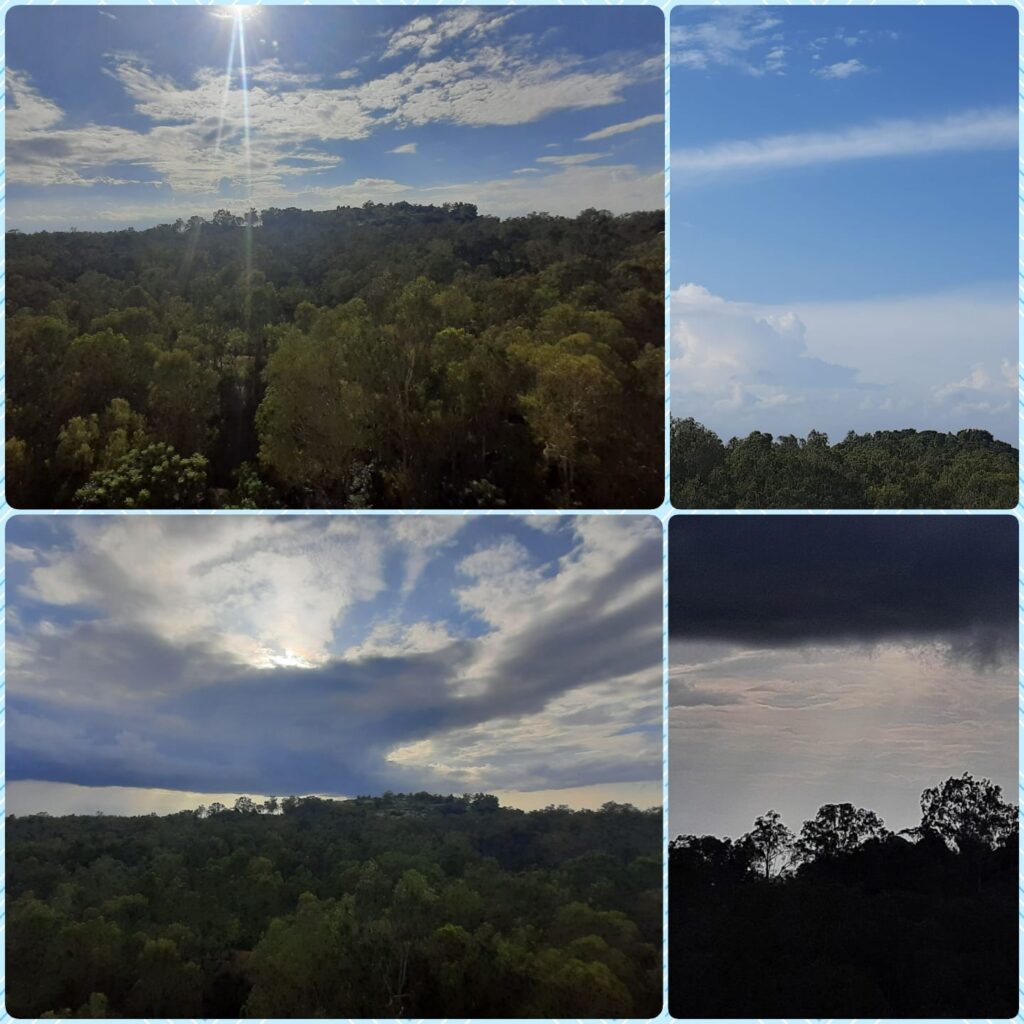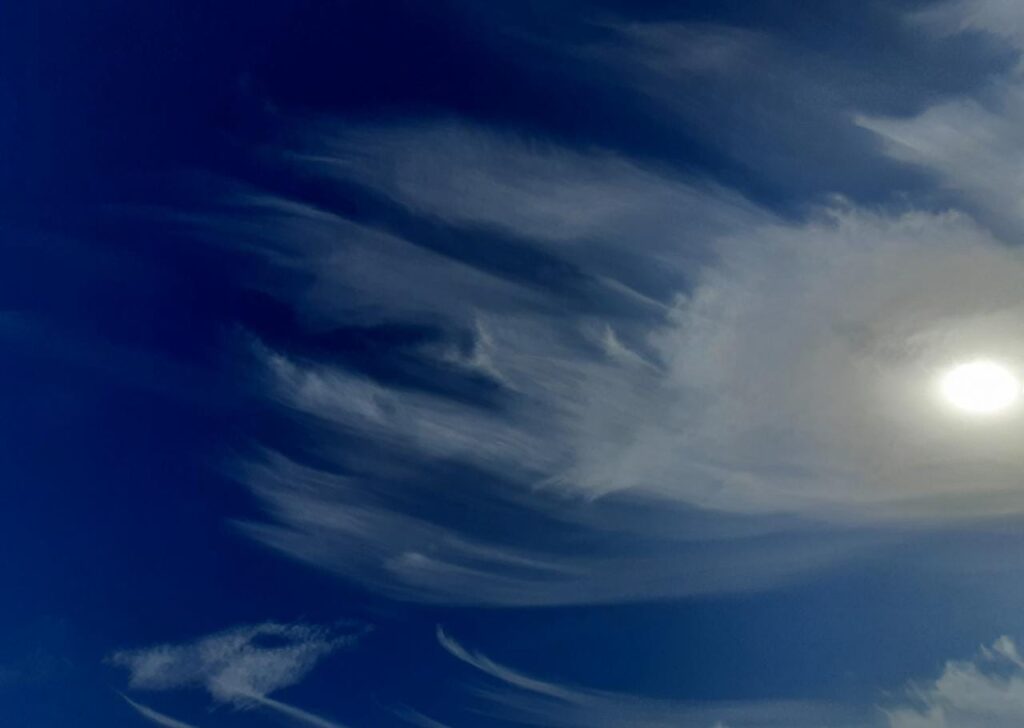Connecting kids with nature
layers of clouds
This evening for a few minutes there was this bright sunshine 🌞 + heavy rain 🌧 … illuminating every raindrop as it tumbled down from the clouds, on to the shimmering trees.
But as we witness this (hyperlapse) video of the orchestration in the sky… we can see different layers of clouds, not all moving in the same direction.
There are several layers of clouds…
- High-level clouds (5-13 km): eg those wispy thin cotto-candy like cirrus clouds.
- Mid-level clouds (2-7 km):
- Low-level clouds (0-2 km): eg cumulus (latin for heap) – those piles of cotton with round edges.
So why do they move in different directions?
Its because of any change in the speed or direction of wind over the layers, termed as wind shear.
Clouds travel with the wind. So they will move in different directions or different speeds depending on which layer they’re in.
Fun Fact: As a storm system departs, winds usually turn counter clockwise with height. This usually brings cooler air into the area. As a storm system arrives, winds usually turn clockwise with height. This usually brings warmer air into the area.Hot air balloons use wind shear to steer where they are going.
~ Ask Ellen: why do clouds sometimes move in different directions?

What’s in a name? A cloud by any other name would float as merrily!
Well, just enjoy the floating shapes in the beautiful sky… but if you’d like to know the classification without memorizing all the names… the clasification is basically a combination of appearance, altitude, and ability to make precipitation.
| Latin word | meaning | description |
| stratus | layered | Layered clouds are much wider than they are tall. They generally have flat bases and tops and can extend from horizon to horizon. |
| cumulo | heap | Convective clouds are as tall, or taller, than they are wide. These clouds look lumpy and piled up, like a cauliflower. Convective clouds may become very tall and are rounded on top. |
| cirro | curl | a high cloud that is usually composed of wispy ice crystals. |
| nimbus (prefix) | rain | causing precipitation |
| alto | altitude | indicates a cloud in the middle of the troposphere that is below the high cirro-type clouds. |
There’s a long list of names of different clouds – clouds that we’re very familiar with, but we can see their names are a combination of these latin terms, each with its own characteristic.
Eg Cirrus is one of the most common types of clouds that can be seen at any time of the year. They’re thin and wispy with a silky sheen appearance.
This type of cloud is always made of ice crystals whose degree of separation determines how transparent the cirrus is. Besides the filament appearance, cirrus clouds stand out among other types of cloud because they’re often colored in bright yellow or red before sunrise and after sunset, respectively. Cirrus clouds lit up long before other clouds and fade out much later.
Cirrocumulus clouds usually form at about 5 km above the surface with small white fluff patterns that spread out for miles and miles over the sky. They never generate rainfall (but can mean cold weather) nor do they interact with other types of clouds to form larger cloud structures.
Ref: The types of clouds: everything you need to know

Recent Comments